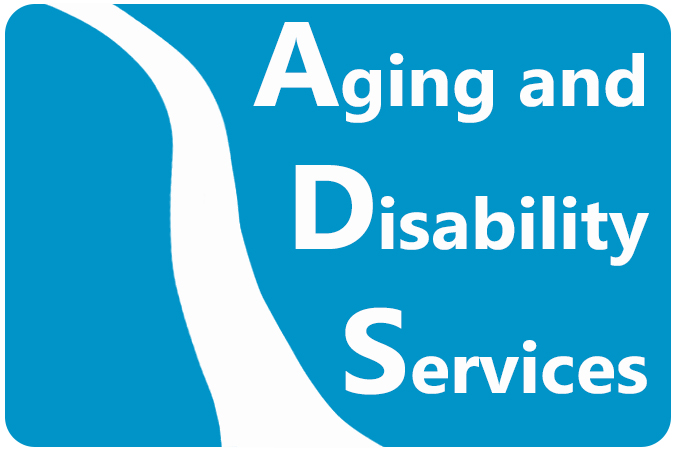Live Well - a Chronic Disease Self-Management Program
Live Well brings great news for older adults and caregivers with on-going conditions such as arthritis, diabetes, high blood pressure, anxiety, depression, heart and lung disease, asthma and any chronic pain. Live Well is a nationwide evidence-based health promotion program developed by Stanford University. Workshops help participants and caregivers to:
- Find better ways of dealing with pain and fatigue
- Discover easy exercises to help improve or maintain strength and energy
- Learn the appropriate use of medications
- Improve nutrition
- Talk effectively with family, friends and health professionals
- Understand new treatment choices
- Feel better about life
- Increase confidence in ability to manage health
Workshops are highly interactive and are facilitated by two specially trained leaders. Workshops cover new topics each week and provide opportunities for interaction and group problem solving.
The Chronic Disease Self-Management Program is a workshop given two and a half hours, once a week, for six weeks, in community settings such as senior centers, churches, libraries and hospitals. People with different chronic health problems attend together. Workshops are facilitated by two trained leaders, one or both of whom are non-health professionals with chronic diseases themselves.
How can I attend a Live Well Workshop?
Contact your local Area on Agency on Aging and ask to speak with the Live Well Coordinator for a listing of workshops in your area.
Is the program offered in different languages?
Yes! In Connecticut the Live Well program is also offered in Spanish. The program is called Tomando Control de su Salud. Interested individuals can contact their local Area Agency on Aging for a listing of workshops in their area.
Does the Program replace existing programs and treatments?
The Self-Management Program will not conflict with existing programs or treatment. It is designed to enhance regular treatment and disease-specific education such as Better Breathers, cardiac rehabilitation, or diabetes instruction. In addition, many people have more than one chronic condition. The program is especially helpful for these people, as it gives them the skills to coordinate all the things needed to manage their health, as well as to help them keep active in their lives.
How was the Program developed?
The Division of Family and Community Medicine in the School of Medicine at Stanford University received a five year research grant from the federal Agency for Health Care Research and Policy and the State of California Tobacco-Related Diseases office. The purpose of the research was to develop and evaluate, through a randomized controlled trial, a community-based self-management program that assists people with chronic illness. The study was completed in 1996.
The research project had several investigators: Halsted Holman, M.D., Stanford Professor of Medicine; Kate Lorig, Dr.P.H., Stanford Professor of Medicine; David Sobel, M.D., Regional Director of Patient Education for the Northern California Kaiser Permanente Medical Care Program; Albert Bandura, Ph.D., Stanford Professor of Psychology; and Byron Brown, Jr., Ph.D., Stanford Professor of Health Research and Policy. The Program was written by Dr. Lorig, Virginia González, M.P.H., and Diana Laurent, M.P.H., all of the Stanford Patient Education Research Center. Ms González and Ms Laurent also served as integral members of the research team.
The process of the program was based on the experience of the investigators and others with self-efficacy, the confidence one has that he or she can master a new skill or affect one’s own health. The content of the workshop was the result of focus groups with people with chronic disease, in which the participants discussed which content areas were the most important for them.
How was the Program evaluated?
Over 1,000 people with heart disease, lung disease, stroke or arthritis participated in an randomized, controlled test of the Program, and were followed for up to three years. We looked for changes in many areas: health status (disability, social/role limitations, pain and physical discomfort, energy/fatigue, shortness of breath, psychological well-being/distress, depression, health distress, self-rated general health), health care utilization (visits to physicians, visits to emergency department, hospital stays, and nights in hospital), self-efficacy (confidence to perform self-management behaviors, confidence to manage disease in general, confidence to achieve outcomes), and self-management behaviors (exercise, cognitive symptom management, mental stress management/relaxation, use of community resources, and communication with physician).**
What were the results?
Subjects who took the Program, when compared to those who did not, demonstrated significant improvements in exercise, cognitive symptom management, communication with physicians, self-reported general health, health distress, fatigue, disability, and social/role activities limitations. They also spent fewer days in the hospital, and there was also a trend toward fewer outpatients visits and hospitalizations. These data yield a cost to savings ratio of approximately 1:4. Many of these results persist for as long as three years.*** Studies by others have reported similar results (see our bibliography).
How is the Program Funded?
This program is funded in partnership by the Department of Aging and Disability Services through Older American Act Title IIIE funding and the Connecticut Department of Public Health.

